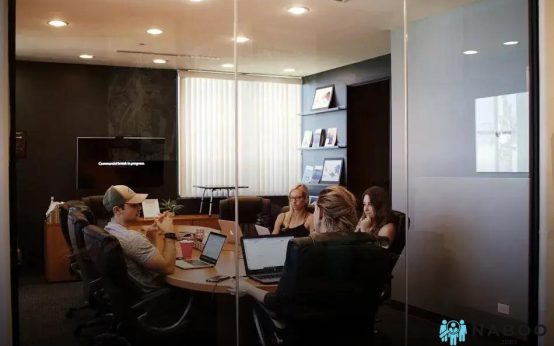Setting up the perfect home office is essential for anyone working remotely. With the right setup, you can boost your productivity and create a comfortable work environment. Consider the location, furniture, and ergonomics, along with lighting and personalization, to make your office ideal for your needs. In this guide, we’ll explore how to tailor each element to suit your personal style and work habits.
Choosing the Right Location
When setting up the perfect home office, choosing the right location is crucial for creating a productive work environment. You’ll want to start by selecting a space that is free from distractions, allowing you to focus on work tasks without interruptions. Consider spaces like spare rooms, attics, or even the corner of a large living room.
Privacy is vital, so opt for a location that gives you the ability to close a door if possible. This not only helps in minimizing noise but also in creating a clear separation between home and work life. If a separate room isn’t available, using dividers or curtains can create a sense of partitioning.
Natural light is a bonus when choosing your location. Ideally, place your desk near a window. Exposure to daylight can boost mood and productivity. However, if glare on the screen is an issue, positioning your computer perpendicular to windows can help minimize it. In case of a smaller or windowless area, maximize available lighting with well-placed lamps.
When considering acoustics, it’s important to place your office away from noisy areas such as the kitchen or main entrance. Soundproofing options like rugs, curtains, and sound panels can make a difference in keeping noise levels down.
The location you choose should also support your technology needs. Ensure there’s easy access for power outlets and a stable Wi-Fi signal. You may need an extension cord or power strip to accommodate your equipment.
Essential Furniture and Equipment
When setting up a home office, having the right furniture and equipment is crucial to productivity and comfort. A robust desk is essential as it provides the main workspace area. Look for one with adequate surface area to fit your computer, notes, and other office supplies. Pair it with an adjustable chair that offers good lumbar support to prevent posture-related issues.
Shelving units or filing cabinets can help keep documents organized and accessible, which is key to maintaining a clutter-free workspace. Consider your storage needs and select units that integrate well into your space without overwhelming it.
For tech equipment, a reliable computer setup is non-negotiable. Whether it’s a desktop or a laptop, ensure it’s equipped to handle your work tasks efficiently. Additionally, a secondary monitor can enhance multitasking capabilities and reduce eye strain. Don’t forget a high-quality keyboard and mouse, as they contribute greatly to your comfort.
Network connectivity is another critical component. A fast and stable internet connection, complemented by a good router, ensures seamless communication and data transfer.
Printers and scanners may also be necessary, depending on your specific tasks. Opt for compact models to save space if these are essential for your work.
Finally, invest in a comfortable headset with a microphone for virtual meetings and calls. Noise-canceling features can significantly enhance your focus by minimizing background noise.
Optimizing for Ergonomics
When setting up your perfect home office, ergonomics plays a crucial role in ensuring comfort and productivity. Start by evaluating your chair and desk setup, as these are foundational elements. Your chair should support your lower back, and your feet should rest flat on the ground. Adjust the chair height so your eyes are aligned with the top of your monitor, reducing neck strain.
Invest in a height-adjustable desk, if possible, to alternate between sitting and standing throughout your workday. This can help in reducing fatigue and improving focus. When seated, your knees should be at a 90-degree angle, and your arms should bend comfortably at the elbows as you type.
Monitor positioning is key in ergonomics. Place it about an arm’s length away from you, with the top of the screen at or slightly below eye level. This positioning helps maintain a healthy posture while preventing eye strain.
Don’t underestimate the importance of keyboard and mouse placement. They should be at the same level and close enough to avoid stretching your arms. Consider using an ergonomic keyboard and mouse designed to reduce stress on your wrists and hands.
Lastly, integrate regular breaks and stretches into your routine. Get up and move around every 30 minutes. Simple exercises, such as neck and shoulder stretches, can significantly improve your overall well-being. Optimizing for ergonomics not only enhances comfort but also boosts productivity in your home office.
Lighting and Ambience
Creating the right lighting and ambience in your home office can greatly enhance productivity and comfort. By strategically planning your lighting setup, you can ensure a workspace that is both functional and inviting.
Natural Light is your ally when setting up your home office. Position your desk near a window to take advantage of sunlight during the day. Natural light reduces eye strain and can boost your mood and energy levels, making your work environment feel more enjoyable.
However, it’s crucial to prevent glare. Consider using blinds or curtains to diffuse harsh sunlight. If natural light is limited, supplement with artificial lighting that mimics daylight.
Layered Lighting is key to flexibility. Combine ambient lighting with task-specific lights to create a balanced illumination throughout your workspace. An overhead light provides general lighting, while desk lamps offer focused light for reading or working on detailed tasks.
Choose a desk lamp with adjustable settings to reduce shadows and glare on your computer screen. A lamp with a flexible arm allows you to direct the light precisely where it’s needed, preventing any discomfort during long work hours.
Consider Color Temperature. The warmth or coolness of the lighting can influence your concentration levels. Cooler light temperatures, which are similar to daylight, are generally more stimulating and can improve focus during the day. In contrast, warmer lights can create a cozy atmosphere for late-night work sessions.
Adding decorative lighting elements, such as LED strips or accent lights, can also enhance the ambience. These can be placed on shelves or behind a monitor to add a touch of personality and warmth to your office without being intrusive.
Lastly, make sure your lighting setup is aligned with your work habits and preferences. Experiment with different light sources and arrangements until you find the perfect balance for your home office environment.
Personalizing Your Workspace
Make It Yours with Personal Touches
Your workspace should reflect your personality and preferences. Adding personal touches not only makes it feel more welcoming but also boosts your motivation to get work done. Start by selecting colors that you love, as color can influence mood. Consider hanging up your favorite artwork or family photos to keep you inspired. Use personalized office supplies or custom desk accessories that make your daily tasks more enjoyable.
Consider Functionality and Comfort
While personalization is key, balancing it with functionality is vital. Choose a desk layout that allows for easy access to all your tools and equipment. Prioritize accessibility to essential items over decorative pieces. Comfort also impacts productivity, so ensure ergonomic principles are maintained even as you add personal elements.
Incorporate Elements That Motivate You
Think about what motivates you and incorporate those elements into your workspace. It could be an inspirational quote, a vision board, or a small plant to bring a touch of nature. Items that evoke positive emotions can improve mental clarity and focus.
Create Zones for Different Tasks
Divide your workspace into zones if you juggle multiple tasks. A specific area for intensive work versus a relaxation corner can help set the right frame of mind. Use rugs or different lighting to subtly distinguish these areas.
Stay Organized with Style
Organization doesn’t have to be boring. Use stylish storage solutions to keep your workspace tidy. Opt for colorful baskets or sleek shelves that fit your aesthetic. Remember, a clutter-free environment can enhance both concentration and creativity.




